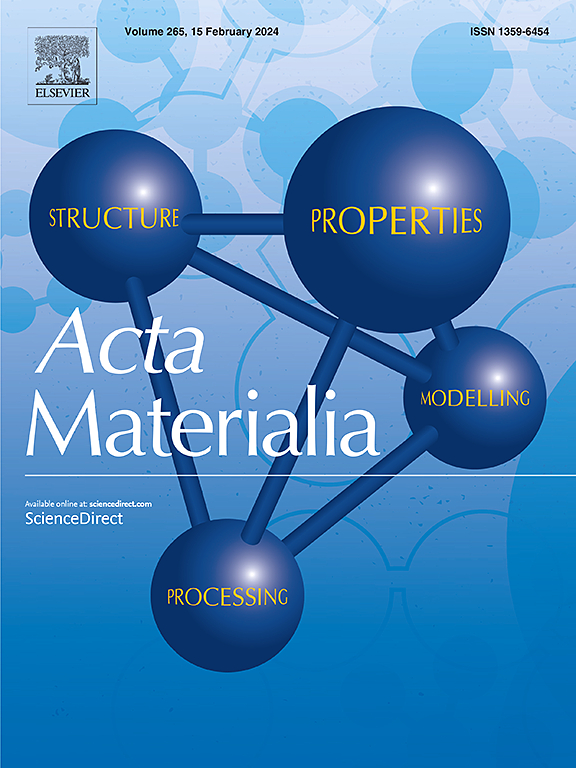优化zlo中合金元素的原子分布及第二相颗粒的鉴定
IF 8.3
1区 材料科学
Q1 MATERIALS SCIENCE, MULTIDISCIPLINARY
引用次数: 0
摘要
对于优化的ZIRLO,第二相颗粒(SPPs)的精确化学组成以及晶界和界面处的溶质分布仍然未知,最近对这些合金中Zr-Nb-Fe金属间相的鉴定存在争议。在这里,原子探针层析成像(APT)与扫描透射电子显微镜(STEM)、透射Kikuchi衍射(TKD)和密度泛函理论(DFT)相结合,证明了通常被报道为Zr(Nb,Fe)2的相最有可能是(Zr,Nb)3Fe的金属间相,具有~ 35 at。% Nb。在β-Nb/α-Zr和(Zr,Nb)3Fe/α-Zr界面和晶界处计算界面过量。Fe在β-Nb析出相与α-Zr基体的界面处富集。Fe、Sn、Nb在α-Zr晶界处偏析,β-Nb/α-Zr基体界面处未见Sn偏析,α-Zr与金属间相界面及晶界处有轻微的Sn偏析。对晶界偏析、二次相组成和溶质行为的进一步了解将有助于更好地理解Zr合金的机械和腐蚀性能,这有望对未来Zr合金的发展有所帮助。本文章由计算机程序翻译,如有差异,请以英文原文为准。


Atomic distribution of alloying elements and second phase particles (SPPs) identification in Optimised ZIRLO
The accurate chemical composition of second phase particles (SPPs) and solute distributions at grain boundaries and interfaces are still not known for Optimised ZIRLO, with recent debate over the identification of a Zr-Nb-Fe intermetallic phase in these alloys. Here, atom probe tomography (APT) is combined with scanning transmission electron microscopy (STEM), transmission Kikuchi diffraction (TKD), and density functional theory (DFT) to demonstrate that the phase, commonly reported as Zr(Nb,Fe)2, is most likely an intermetallic phase of (Zr,Nb)3Fe with ∼35 at.% Nb.
Interfacial excess is calculated at the β-Nb/α-Zr and (Zr,Nb)3Fe/α-Zr interfaces and at the grain boundaries. Fe is enriched at the interface between β-Nb precipitates and the α-Zr matrix. Fe, Sn, and Nb segregate at α-Zr grain boundaries, no Sn segregation was observed at the interface of β-Nb/α-Zr matrix, and slight Sn segregation was detected at the interface of the intermetallic phases with the α-Zr and at the grain boundaries.
An enhanced understanding of grain boundary segregation, secondary phases composition, and solute behaviour will inform a better understanding of mechanical and corrosion properties, which is expected to be useful for future Zr alloy development.
求助全文
通过发布文献求助,成功后即可免费获取论文全文。
去求助
来源期刊

Acta Materialia
工程技术-材料科学:综合
CiteScore
16.10
自引率
8.50%
发文量
801
审稿时长
53 days
期刊介绍:
Acta Materialia serves as a platform for publishing full-length, original papers and commissioned overviews that contribute to a profound understanding of the correlation between the processing, structure, and properties of inorganic materials. The journal seeks papers with high impact potential or those that significantly propel the field forward. The scope includes the atomic and molecular arrangements, chemical and electronic structures, and microstructure of materials, focusing on their mechanical or functional behavior across all length scales, including nanostructures.
 求助内容:
求助内容: 应助结果提醒方式:
应助结果提醒方式:


